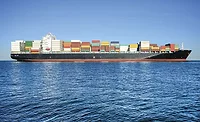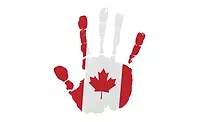Europe: Slow Growth Ahead
That’s the word from industry suppliers who in September attended Eurocoat ‘99 in Lyon, France. Many credit the euro with helping to strengthen trade because it has facilitated price comparisons for upstream and downstream customers, says Jean Paul Gabory, Clariant’s paint manager for France.
Tom Mach, senior chemicals industry analyst at Frost & Sullivan (Mountain View, CA), says the euro is one of the more dramatic changes for Europe. “There still, however, is some question on whether the euro will do what it was supposed to do; that is, solve banking crises that could occur. We’re not sure at this point whether it is going to help people out.”
While a strong euro is expected to translate into greater business opportunities, suppliers to the European industrial paint sector say their overall market will show only slight gains. They say that only parts of this sector are beginning to recover from the recession and subsequent fall in demand that struck Europe in the early to mid-1990s. Robert Peacock, an analyst at Frost & Sullivan (London), says that the compound annual growth rate for the entire European industrial paint market will be only 0.4%, with growth in unit shipments of about 0.8%.
The coil, can, general industrial and protective coatings markets, however, are expected to have above-average growth. Mach credits such optimism in part to a general rise in the gross domestic product of several European countries of less than 2%. “That is pretty good for Europe, which was looking at a flat rate for a few years,” says Mach. “At least now it is in the black.”
Other factors influencing growth are more stringent European Union regulations for VOC emissions that have started to kick in, says Peacock. Throughout Western Europe especially, demand increase for high-solids and water-based systems has resulted in a volume decrease of paint in certain applications.
Some 25 million metric tons a year (MTA) of paint, valued at about 50.1 billion euros, is sold worldwide, according to IDEXPO (France), the exposition sponsor. Western Europe, North America and Asia account for about 80% of the market, with Latin America and Eastern Europe the next largest consumers.
Nico Bolle, industry sales manager for paint at Hercules International’s Aqualon division (Rijswijk, The Netherlands), says the mature Northern Europe paint market, in which he includes Italy, will continue to have slow (1–2%) growth for the next few years. However, Southern Europe, in which he includes Turkey, will be the more dynamic with growth at 3–5%. He says Turkey’s paint market was expanding by about 5% before its devastating earthquake in August. The growth, he says, was largely due to the country’s strong construction industry and its export market to regions including Europe and the Middle East. “They have a lot of sophisticated industry and it is a very important growing market for paint.”
In France, the number of paint companies has shrunk from about 400 in the early 1980s to about 180 today. Total Fina’s Kalon-Sigma is the largest national paint manufacturer, producing about 150,000 MTA for the deco market. The business, a result of the merger of Total with PetroFina this year, is one of many of the newly formed paint titans.
A result of the last 18 months of blockbuster merger and acquisition activity in the paint industry, the European market is being reorganized. In October 1998, for example, DuPont’s $1.89-billion acquisition of Herberts gave DuPont the leading automotive coatings position in Europe. Thirty of Herberts’ 37 manufacturing facilities were located in Europe.
Akzo Nobel’s $3.1-billion purchase of Courtaulds in 1998 firmly positioned Akzo as the largest paint company worldwide, reinforcing its share in the European deco, automotive refinish and industrial coatings markets.
In 1998, ICI also fortified its European deco operations with the $586-million purchase of Williams (London) home-improvement business.
PPG continues to grow its European presence with several major acquisitions since 1997, including a recent purchase of ICI’s $684-million automotive refinish and industrial coatings businesses in Europe and the Americas. Other recent European buys include packaging coating companies HOBA Lack und Farben in Bodelshausen, Germany, and Gonfreville Coatings S.A. in Gonfreville, France. Also this year, with its $512-million purchase of PRC-DeSoto International from Akzo, PPG picked up aerospace coatings and sealants business in France and England.
While it remains to be seen how Rohm and Haas will structure the paint side of its Morton purchase, industry observers are looking for possible signs of change in Italy, where Morton has a strong powder coatings presence.
Suppliers, too, continue to reposition themselves worldwide. Big deals in the last year include Lyondell Chemical’s acquisition of ARCO Chemical, and Eastman Chemical’s purchase of Lawter International.
Europe is a strong market for high-performance polymer suppliers to the wood flooring industry. “The U.S. is a big market for exterior wood coatings. But here in Europe, the scarcity of wood and quality are issues, so people don’t mind spending money for a high-performance coating,” says Stephen J. Mothersole, Air Products and Chemicals business development manager in Europe for industrial coatings and resins. “Most of the technology in formulating paints for floors is done by European companies.”
Roberto Pieri, Air Products epoxy additives sales official for Southern Europe, says that multinational as well as smaller regional coatings producers are concentrating on certain end markets that are not globally universal but require high-performance products. “In the concrete market, for example, you don’t need to be global because there are still a lot of local producers,” he says. The concrete market is one of Air Products’ niches. “We can do a lot more of the hand-holding ourselves,” he says. Also, prices in the European concrete market are high when compared to its U.S. counterpart, largely because the cost of land space is higher in Europe and concrete producers are up against faster back-in-service times from their customers, says Pieri.
In aliphatic isocyanates, Rhodia is number two worldwide, behind Bayer, says Eric Garcin, Rhodia development and marketing manager. He says that European growth in this sector is expected to be about 4% a year, largely due to growth in the refinish industry, its biggest market.
Resin producers say they expect to be able to pass on the resin monomer price hikes that they expect to incur shortly due to higher oil prices. At press time, they said they were in standby mode on initiating price increases until they could determine if the monomer hikes were spot increases or more long term.
“We see an increase in production but we have some problems with prices because we are under pressure on the raw materials side,” says Gabory. He says resin producers selling in Europe also are facing tough competition from southeast Asian imports. “The prices of raw materials in Europe were higher than America so companies in southeast Asia prefer to come here,” he says.
To stay ahead of the pricing squeeze, paintmakers must improve production, he says. For do-it-yourselfers, for example, “The average customer buying from a Carrefour wants the lowest price and the best quality. It doesn’t matter if the product is French or from another country.”
In the deep-discount aisle, France’s Carrefour’s acquisition of the Promodès Group this year created a new retail powerhouse in Europe. Except for Germany and the United Kingdom, Carrefour reportedly has more European market share than Wal-Mart stores. To help in coping with such retail pressure and to avoid potential customer confusion, many of the newly merged paint companies are retaining their former brand names, Gabory says. The hope is that customers faced with shelves full of products at a mass merchandiser, for example, will remember and stay loyal to the brands they have always used.
Color was a theme of the show and the concurrent technical conference, which was sponsored by AFTPVA, the French paint and coatings association. To that end, the RAL color system is expected to have some competition in the United States soon when the Scandinavian Color Institute expands its NCS color-identification system to the United States. The NCS system, said to be used widely in the European deco paint market, will be offered along with RAL colors by Morton’s powder coatings business.
The biggest use of effect pigments worldwide, and especially in Europe, are in the automotive and cosmetic sectors, says Isabelle Ambos, Engelhard Mearl International France coatings and inks manager (Paris). “Color is a good tool for promotion,” says Thierry Colomb, Engelhard’s automotive industry manager for France. “It is cheaper to promote a product through color than through changing the product’s shape.” He adds that effect pigments with a high degree of chromaticity are usually used for mid-size car launches in Europe.
Slow growth is expected in the European automotive paint business, says Ulrich-Andreas Hirth, group manager of industrial coatings at Merck’s pigments division (Darmstadt, Germany). In response, effect pigment suppliers to this business are concentrating on new generation products. He says effect pigments are becoming more popular in Germany, in particular, on skyscrapers and building facades, such as the main post office in Munich.
Merck has invested about DM45 million, or about $25 million (U.S.), to build a new plant in Gernsheim, near Darmstadt, for its Colorstream effect pigments. Production is set to begin before year-end. Merck also produces other effect pigments at a pilot plant in Onahama, Japan, which it plans to expand soon.
In the titanium dioxide (TiO2) sector, producers at press time were waiting to see if their latest price increase initiatives would stick.
“At this moment in time demand is very strong for TiO2 because the European economies have just turned around and people are consuming a lot for the millennium,” says David Young, DuPont marketing manager for white pigments in Europe. He adds that paintmakers may also be building raw material and finished product inventories in anticipation for problems associated with Y2K. “These factors will drive consumption and demand up.”
Powder coatings are projected to expand in Western and Eastern Europe. Producers expect to ship about 347,000 short tons, valued at about $1.65 billion, in Europe by year-end, says Mach. The market is expected to grow at a compound annual rate of 3.3% a year from 1998–2005.
The general industrial sector represents the lion’s share of the market, expected to account for about 54.9% of the European total by year-end. With 17.8% of the total, architectural accounts for the next largest sector, just ahead of appliances with 16.9% and transportation at 10.4%, says Mach.
Mach says restraints against growth in the European powder coating market include overcapacity situations in certain regions. Previous production increases are causing fierce price drops. Mach says, “Some powders in Europe are going for as low as $2.15/lb., which is low when compared to the United States, where powders are selling from $2.75–$3/lb.”
Factors that will have a positive affect on overall industry growth include the increasing demand in Eastern and Central Europe for Western products. Suppliers say that the region will be a driving force for industry in coming years. Mach adds, “They are getting access to products that have been denied to them before.”
Looking for a reprint of this article?
From high-res PDFs to custom plaques, order your copy today!






